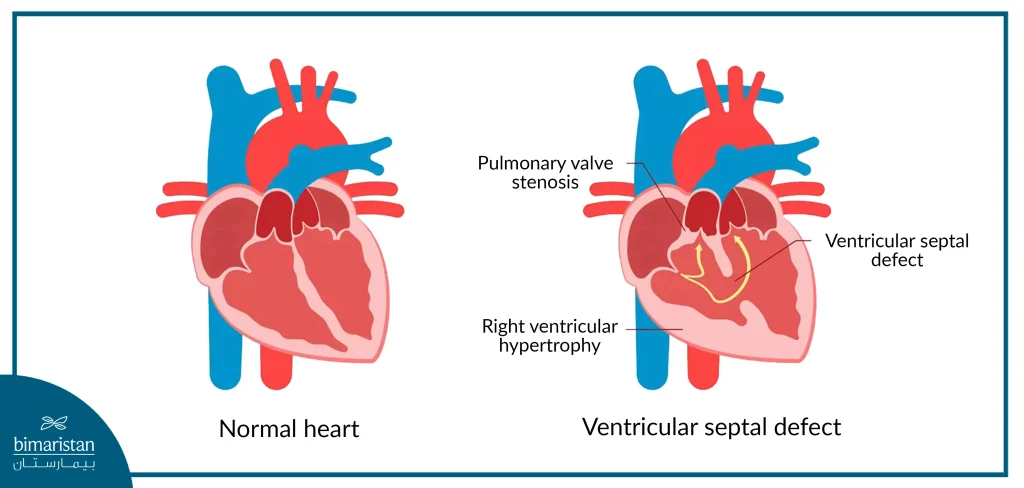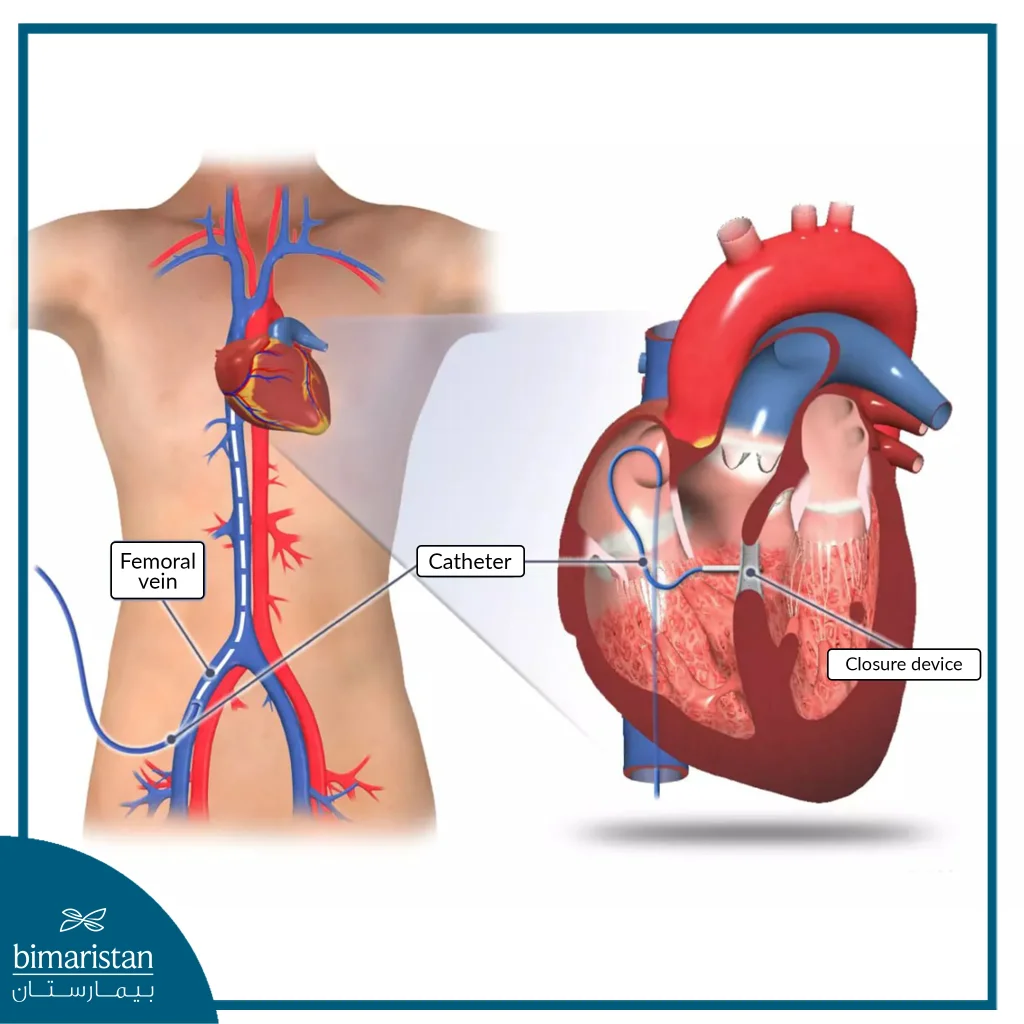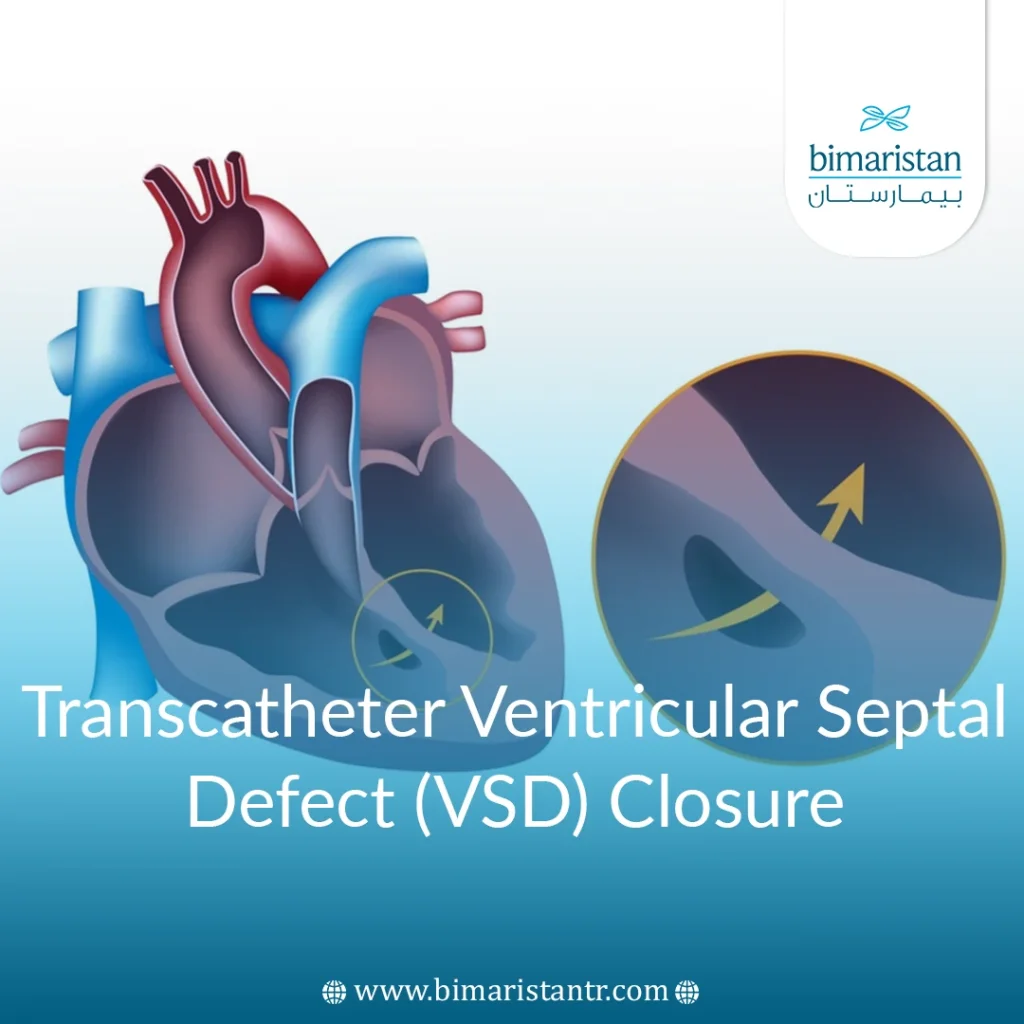Transcatheter Ventricular Septal Defect Closure is considered a safe procedure for many patients. A VSD is a common congenital heart defect, and the success rate of this repair is very high. To ensure optimal care for this condition, it is important to seek treatment at top medical facilities that offer this procedure.
What is transcatheter ventricular septal defect closure for children?
Transcatheter ventricular septal defect closure is a type of heart procedure used to fix a hole between the right and left ventricles of the heart without making an incision in the chest wall.
The heart has four chambers: two upper chambers (atria) and two lower chambers (ventricles). Blood high in oxygen flows from the left atrium into the left ventricle and is pumped out to the body, where vital organs use the oxygen. Blood with lower oxygen levels flows from the right atrium into the right ventricle and is sent to the lungs for more oxygen.
Typically, there is a wall between the right and left atria and between the right and left ventricles. A child with a VSD has a hole in the wall between the right and left ventricles. This hole causes abnormal blood flow from the left ventricle to the right ventricle, leading to excessive blood flow to the lungs.
The procedure for transcatheter ventricular septal defect closure uses a flexible tube called a catheter. This tube contains a small device, often in the shape of an umbrella. The doctor inserts the catheter through the femoral artery to the heart, reaching the wall between the ventricles. The device is then deployed to close the hole in the wall, and the catheter is removed from the body.
Why might your child need transcatheter ventricular septal defect closure?
The purpose of this procedure is to alleviate symptoms caused by the VSD and prevent future complications. The exact cause of most cases of this common heart defect is unknown.
Not everyone with a ventricular septal defect (VSD) needs to have the hole repaired. Very small VSDs may not allow much blood to pass between the ventricles. The heart and lungs do not have to work harder in these cases, so the VSD may not require repair. These small holes often do not cause any symptoms. Sometimes, these small holes may close on their own over time. A cardiologist may wait a period to see if these holes will increase in size before planning any repair, especially in young children.

If your child has a ventricular septal defect (VSD), they may require some form of repair.
Infants and children with larger VSDs often experience symptoms such as faster and more difficult breathing than usual.
They may also fail to gain weight normally. A large, unrepaired VSD can cause elevated blood pressure in the lungs, leading to reduced oxygen levels in the body.
Cardiologists often recommend repair for children with large VSDs, even if they do not yet show symptoms, to prevent long-term lung damage. This procedure is frequently performed on infants or young children. Sometimes, adults may also need transcatheter ventricular septal defect closure if a VSD is not detected during childhood.
Currently, the standard treatment for VSD repair is open-heart surgery rather than catheter-based repair. Open-heart surgery requires the use of a heart-lung machine. However, your child’s cardiologist may suggest VSD transcatheter closure. This approach generally results in a shorter recovery time but may have a higher rate of complications. Consult your child’s doctor about the pros and cons of catheter-based repair or other repair options. Reasons for considering catheter-based closure might include technical challenges with surgical closure or situations where individuals cannot use a heart-lung machine for various reasons.
What are the risks of transcatheter ventricular septal defect closure in a child?
Most children do well with ventricular septal defect closure. However, complications can occasionally occur. Specific risk factors may vary depending on the child’s age, the size of the defect, and other health issues. Potential risks include:
- Excessive bleeding
- Infection
- Blood clots, which can lead to stroke or other problems
- Arrhythmias, which could rarely be fatal
- Heart block, which may require a pacemaker
- Hematoma in the groin
- Movement or dislodgment of the device through the heart or vessels (embolism)
- Valve problems
- Anesthesia complications
In rare cases, the device used to repair the defect may become dislodged, necessitating another procedure. Ask your child’s healthcare provider about the specific risks for your child.
How can I help my child prepare for transcatheter closure of VSD?
Ask your child’s healthcare provider how to help your child’s VSD transcatheter closure. Your child should not eat or drink anything after midnight the night transcatheter closure of VSD. Your child may also need to stop taking certain medications before the procedure.
Your child’s healthcare provider may want to perform additional tests before the procedure. These may include:
- Chest X-ray
- Electrocardiogram (ECG) to assess heart rhythms
- Blood tests to check overall health
- Echocardiogram (heart ultrasound) to examine heart anatomy and blood flow through the heart
What happens during ventricular septal defect closure for a child?
Discuss with your child’s healthcare provider what to expect during the procedure. Generally:
- Your child will be anesthetized before the procedure begins, usually with intravenous medications. Your child will be deeply asleep and pain-free during the procedure and will not remember it afterward.
- The repair will take about two hours.
- The healthcare provider will insert a small, flexible tube (catheter) into several blood vessels in the groin. The catheter will contain a small device inside it.
- The doctor will guide the catheter through the blood vessels to the site of the ventricular septal defect.

- X-rays and echocardiography will be used to locate the catheter precisely. Sometimes, an esophageal echocardiogram may be performed, which involves inserting an ultrasound camera down your child’s throat.
- The doctor will deploy the small device (a plug) from the catheter to close the hole in the wall between the ventricles and secure it in place.
- Once the procedure is complete, the catheter will be removed through the blood vessels.
- The doctor will close the site where the catheter was inserted.
What happens after ventricular septal defect closure for a child?
Ask your child’s doctor what to expect after the ventricular septal defect closure. Generally, after the procedure in the hospital, you can expect the following:
- Your child will spend several hours in the recovery room.
- The medical staff will closely monitor your child’s heart rate, blood pressure, oxygen levels, and breathing.
- Your child may need to lie flat for several hours after the procedure, keeping their legs straight, to help prevent bleeding.
- Your child’s healthcare provider may prescribe medication to prevent blood clots.
- Pain relief will be provided as needed.
- The cardiologist may recommend follow-up tests, such as an electrocardiogram (ECG) or echocardiogram.
- Your child will likely need to stay in the hospital for at least one day.
Home care after the ventricular septal defect closure:
- Ask about any medications your child will need.
- Your child might temporarily require antibiotics or medications to prevent blood clots.
- Administer pain medication as needed.
- Encourage your child to avoid strenuous activities and rest.
- If your child has stitches, they will be removed at a follow-up appointment.
- Ensure you attend all follow-up appointments.
- Contact the doctor if your child experiences increased swelling, excessive bleeding, bleeding from the wound, fever, or severe symptoms. Some bleeding from the wound site is normal.
- Follow all instructions provided by your child’s healthcare provider regarding medications, exercise, diet, and wound care.
- For a period after the procedure, your child may also need antibiotics before certain medical or dental procedures to help prevent infections in the heart valves.
In the short term following the procedure, your child will need regular check-ups with a cardiologist. After that, follow-up visits will be less frequent. Most children are able to lead an everyday life without restrictions on their daily activities after recovery.
Learn about aortic valve replacement via catheterization.
References:
- Transcatheter Closure of Ventricular Septal Defects, BlueCross BlueShield Of North Carolina.
- Transcatheter closure of a mid-muscular ventricular septal defect with an Amplatzer VSD occluder device, M Tofeig, R G Patel, K P Walsh

